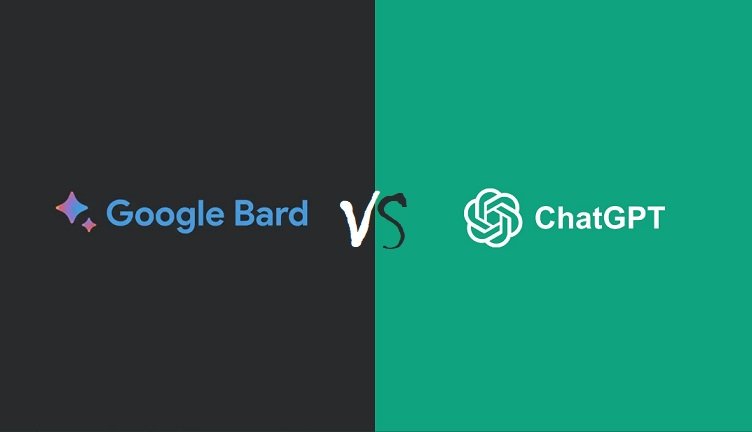Google Bard vs ChatGPT: Google Bard and ChatGPT stand as two highly popular large language models (LLMs) in the market, offering a range of capabilities such as text generation, language translation, creative content writing, and informative question answering.
Although both models share a common foundation, they are trained on distinct datasets. Google Bard undergoes training on an extensive collection of text and code, granting it access to a broader array of information and ensuring it remains up-to-date. ChatGPT, on the other hand, is trained solely on a text dataset, lacking exposure to code-related information.
Google Bard utilizes the Pathways Language Model (PaLM), a neural network trained on vast amounts of text and code. PaLM enables Google Bard to generate text, perform language translation, produce diverse creative content, and provide informative responses to questions.
Meanwhile, ChatGPT relies on the GPT-3 language model, also a neural network trained on extensive text data. ChatGPT excels in generating text, language translation, and creating various forms of creative content. However, there are some key differences between Google Bard and ChatGPT.
Google Bard vs ChatGPT: Key Differences
Data:
Google Bard benefits from training on an “infiniset” of constantly updated text and code data. In contrast, ChatGPT’s training data is fixed and has not been updated since 2021. This disparity ensures that Google Bard possesses a wider range of information and remains more up-to-date.
Internet Access:
Google Bard enjoys real-time internet access, granting it the ability to draw upon the latest information and research. On the other hand, ChatGPT lacks internet access, restricting it to the information stored within its dataset.
User Experience:
While both models are user-friendly, Google Bard offers a slightly more intuitive interface. Notably, Google Bard presents a “Google Search” icon alongside each response, allowing users to conveniently explore additional information on a given topic.
Cost:
Google Bard is available for free, whereas ChatGPT is available for free but the advanced version is paid service called ChatGPT Plus with costs varying based on the desired features.
In conclusion, both Google Bard and ChatGPT offer impressive capabilities as LLMs. However, Google Bard surpasses ChatGPT in certain aspects, such as real-time internet access and a user-friendly interface. If you seek an up-to-date, user-friendly, and free LLM, Google Bard emerges as the superior choice.
Here is a table that summarizes the key differences between Google Bard and ChatGPT:
| Feature | Google Bard | ChatGPT |
|---|---|---|
| Data | Infiniset | Pre-defined dataset |
| Access to the internet | Yes | No |
| User experience | More user-friendly | Less user-friendly |
| Cost | Free | Paid |
Languages in which both services are available:
Bard is currently available in 3 languages (US English. Japanese. Korean) and in over 180 countries and territories. ChatGPT, on the other hand, is available in a wide range of languages including English, Spanish, French, German, Portuguese, Italian, Dutch, Russian, Arabic, Hindi, and Chinese, etc.
Conclusion
Google Bard and ChatGPT are both powerful LLMs that can be used for a variety of tasks. However, Google Bard has some advantages over ChatGPT, such as its access to the internet and its user-friendly interface. If you are looking for an LLM that is up-to-date, easy to use, and free, then Google Bard is the better option.
